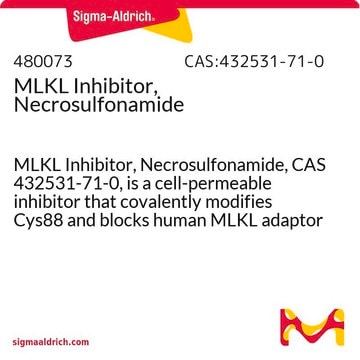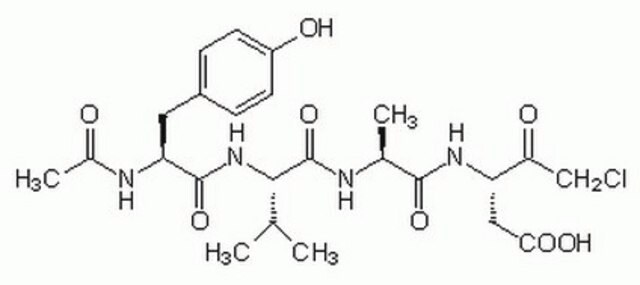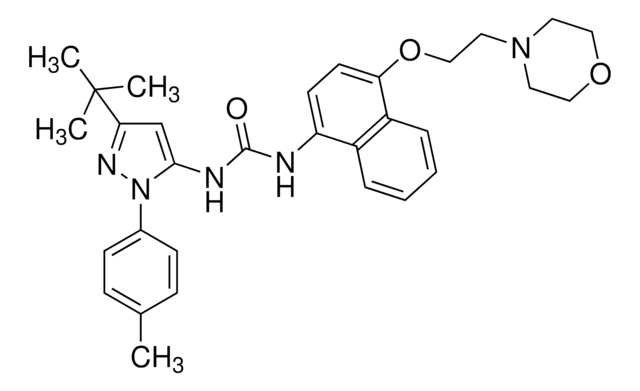480065
Necrostatin-1
≥95% (HPLC), crystalline solid, necroptosis inhibitor, Calbiochem
Synonyme(s) :
Necrostatin-1, Nec-1, Necrosome Inhibitor I, 5-(Indol-3-ylmethyl)-(2-thio-3-methyl)hydantoin, Necrosis Inhibitor II, Methyl-thiohydantoin-tryptophan, MTH-Trp, Receptor-Interacting Protein 1 Inhibitor I, RIPK 1 Inhibitor I, Nec1, RIP1 Inhibitor I
About This Item
Produits recommandés
product name
Necrostatin-1, Necrostatin-1, CAS 4311-88-0, is a cell-permeable, potent, and selective blocker of necroptosis (EC₅₀ = 494 nM in FADD-deficient Jurkat cells treated with TNF-α).
Niveau de qualité
Pureté
≥95% (HPLC)
Forme
crystalline solid
Fabricant/nom de marque
Calbiochem®
Conditions de stockage
OK to freeze
protect from light
Couleur
yellow
Solubilité
DMSO: 10 mg/mL
methanol: 5 mg/mL
Conditions d'expédition
ambient
Température de stockage
2-8°C
InChI
1S/C13H13N3OS/c1-16-12(17)11(15-13(16)18)6-8-7-14-10-5-3-2-4-9(8)10/h2-5,7,11,14H,6H2,1H3,(H,15,18)
Clé InChI
TXUWMXQFNYDOEZ-UHFFFAOYSA-N
Description générale
Actions biochimiques/physiologiques
Blocker of necroptosis
Conditionnement
Avertissement
Reconstitution
Autres remarques
Degterev, A., et al. 2012. Cell Death Differ.20, 366.
Christofferson, D.E., et al. 2012. Cell Death Dis.3, e320.
Takahashi, N., et al. 2012. Cell Death Dis.3, e437.
Degterev, A., et al. 2008. Nat. Chem. Biol.4, 313.
Degterev, A., et al. 2005. Nat. Chem. Biol.1, 112.
Muller, A.J., et al. 2005. Nat. Med.11, 312.
Teng, X., et al. 2005. Bioorg. Med. Chem. Lett.15, 5039.
Informations légales
Code de la classe de stockage
11 - Combustible Solids
Classe de danger pour l'eau (WGK)
WGK 3
Point d'éclair (°F)
Not applicable
Point d'éclair (°C)
Not applicable
Certificats d'analyse (COA)
Recherchez un Certificats d'analyse (COA) en saisissant le numéro de lot du produit. Les numéros de lot figurent sur l'étiquette du produit après les mots "Lot" ou "Batch".
Déjà en possession de ce produit ?
Retrouvez la documentation relative aux produits que vous avez récemment achetés dans la Bibliothèque de documents.
Les clients ont également consulté
Notre équipe de scientifiques dispose d'une expérience dans tous les secteurs de la recherche, notamment en sciences de la vie, science des matériaux, synthèse chimique, chromatographie, analyse et dans de nombreux autres domaines..
Contacter notre Service technique













